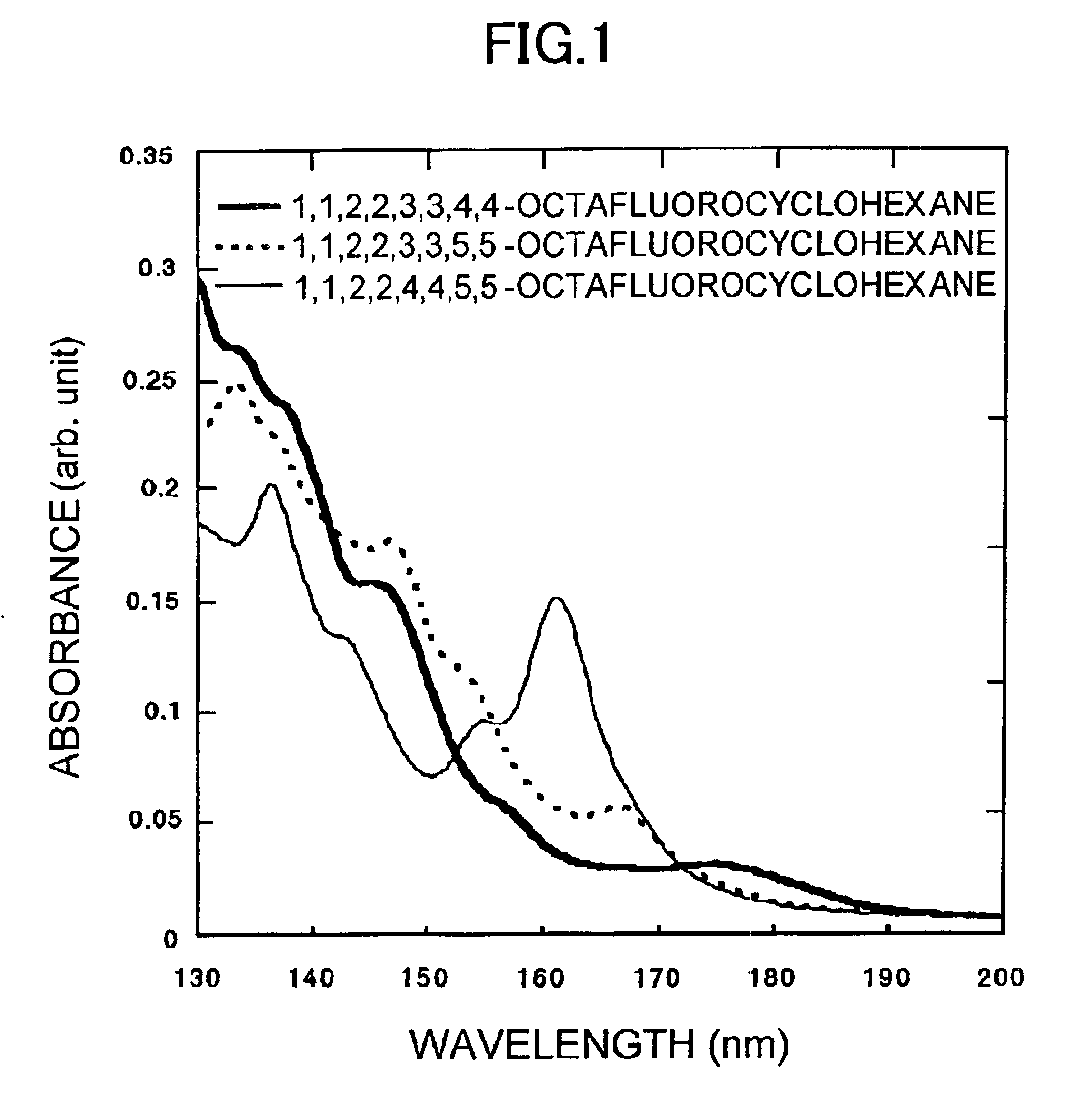Resist material and exposure method
a technology of resist material and exposure method, which is applied in the direction of photosensitive materials, instruments, photomechanical equipment, etc., can solve the problems of deterioration of resist pattern, inability to use resins as resist materials for vuv lithography, and inability to exhibit satisfactory etching resistance of layers, etc., to achieve efficient reduction of the optical absorption rate of an alicyclic group in the wavelength range of vuv light, and the effect of increasing the rate of hydrogen atoms
- Summary
- Abstract
- Description
- Claims
- Application Information
AI Technical Summary
Benefits of technology
Problems solved by technology
Method used
Image
Examples
embodiment
[0039]Herein below, the present invention will be described with reference to the following embodiment based on experimental results.
[0040]With respect to 1,1,2,2,3,3,4,4-octafluorocyclohexane, 1,1,2,2,3,3,5,5-octafluorocyclohexane, and 1,1,2,2,4,4,5,5-octafluorocyclohexane, absorption spectra in the wavelength range of a VUV light were actually measured. In the measurement of absorption spectra, a measurement apparatus was fabricated by the inventor of the present invention, and the light source used was a deuterium lamp (30 W) and an MgF2 lens was used as a light source optical system. As a spectroscope part, a concave-surface diffraction grating having 1,200 grooves / mm (with MgF2 coating) was used. The reciprocal linear dispersion was about 4 nm, and the range of the wavelength for measurement was 125 to 300 nm. In the sample chamber kept under vacuum, a semi-double beam measurement was possible, and a window gas cell made of MgF2 was disposed. A sample molecule gas having contro...
PUM
| Property | Measurement | Unit |
|---|---|---|
| absorption coefficient | aaaaa | aaaaa |
| wavelength | aaaaa | aaaaa |
| wavelength | aaaaa | aaaaa |
Abstract
Description
Claims
Application Information
 Login to View More
Login to View More - R&D
- Intellectual Property
- Life Sciences
- Materials
- Tech Scout
- Unparalleled Data Quality
- Higher Quality Content
- 60% Fewer Hallucinations
Browse by: Latest US Patents, China's latest patents, Technical Efficacy Thesaurus, Application Domain, Technology Topic, Popular Technical Reports.
© 2025 PatSnap. All rights reserved.Legal|Privacy policy|Modern Slavery Act Transparency Statement|Sitemap|About US| Contact US: help@patsnap.com

